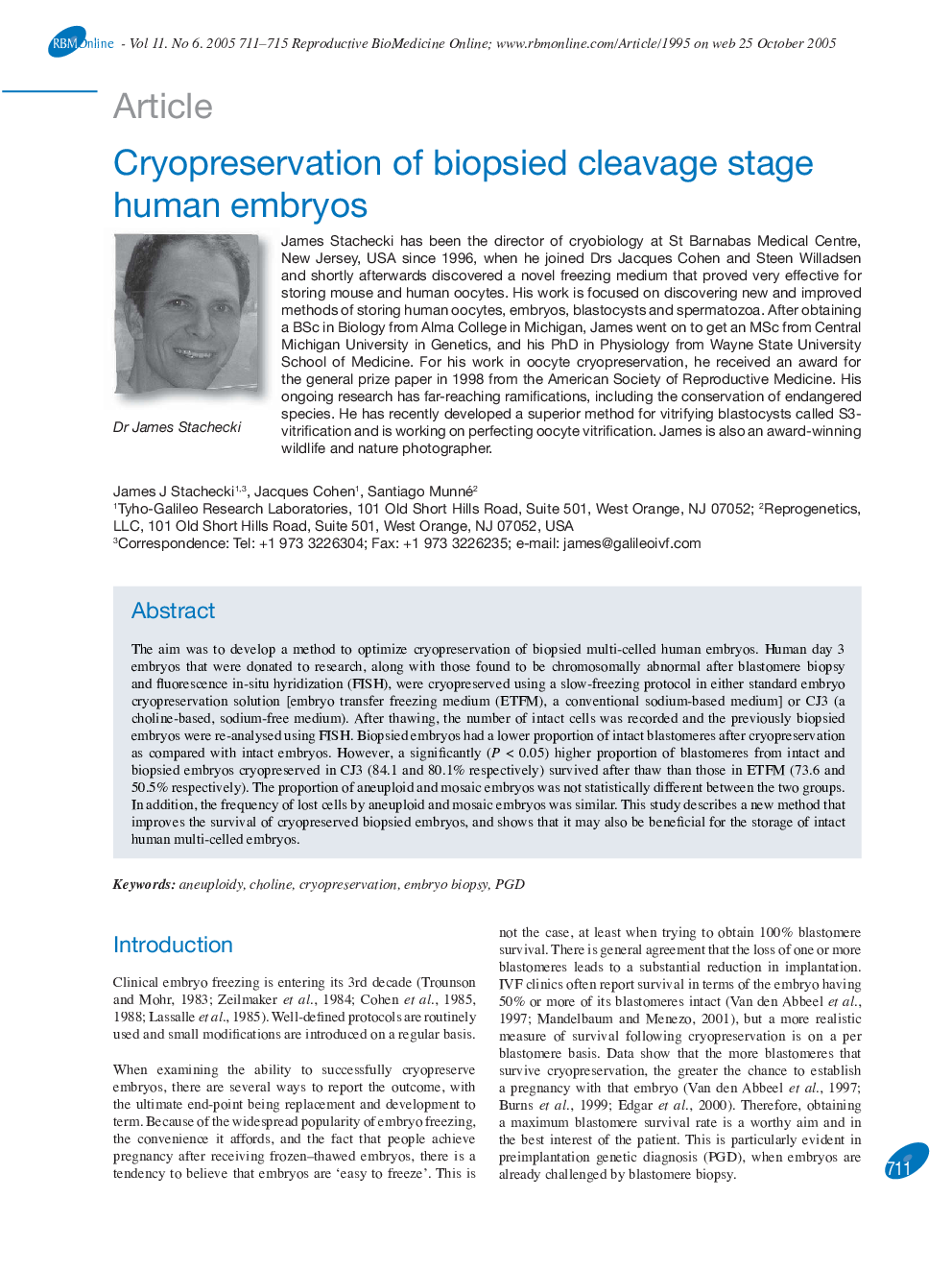| Article ID | Journal | Published Year | Pages | File Type |
|---|---|---|---|---|
| 9334836 | Reproductive BioMedicine Online | 2005 | 5 Pages |
Abstract
The aim was to develop a method to optimize cryopreservation of biopsied multi-celled human embryos. Human day 3 embryos that were donated to research, along with those found to be chromosomally abnormal after blastomere biopsy and fluorescence in-situ hyridization (FISH), were cryopreserved using a slow-freezing protocol in either standard embryo cryopreservation solution [embryo transfer freezing medium (ETFM), a conventional sodium-based medium] or CJ3 (a choline-based, sodium-free medium). After thawing, the number of intact cells was recorded and the previously biopsied embryos were re-analysed using FISH. Biopsied embryos had a lower proportion of intact blastomeres after cryopreservation as compared with intact embryos. However, a significantly (P < 0.05) higher proportion of blastomeres from intact and biopsied embryos cryopreserved in CJ3 (84.1 and 80.1% respectively) survived after thaw than those in ETFM (73.6 and 50.5% respectively). The proportion of aneuploid and mosaic embryos was not statistically different between the two groups. In addition, the frequency of lost cells by aneuploid and mosaic embryos was similar. This study describes a new method that improves the survival of cryopreserved biopsied embryos, and shows that it may also be beneficial for the storage of intact human multi-celled embryos.
Related Topics
Health Sciences
Medicine and Dentistry
Obstetrics, Gynecology and Women's Health
Authors
James J Stachecki, Jacques Cohen, Santiago Munné,
